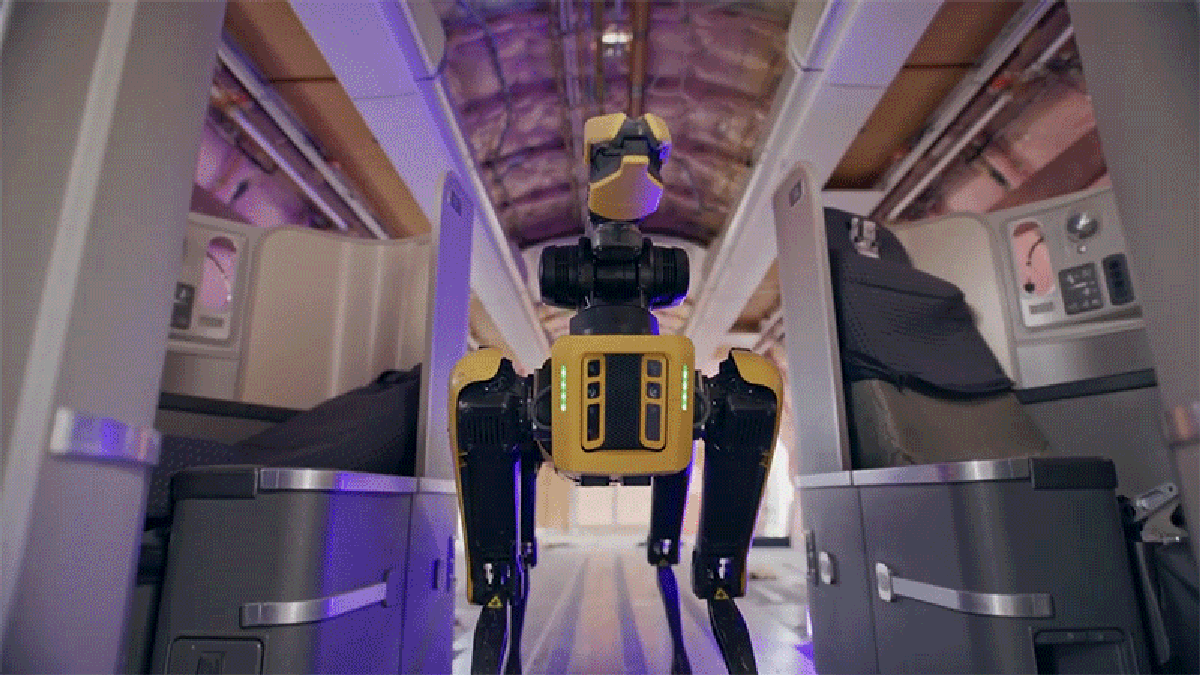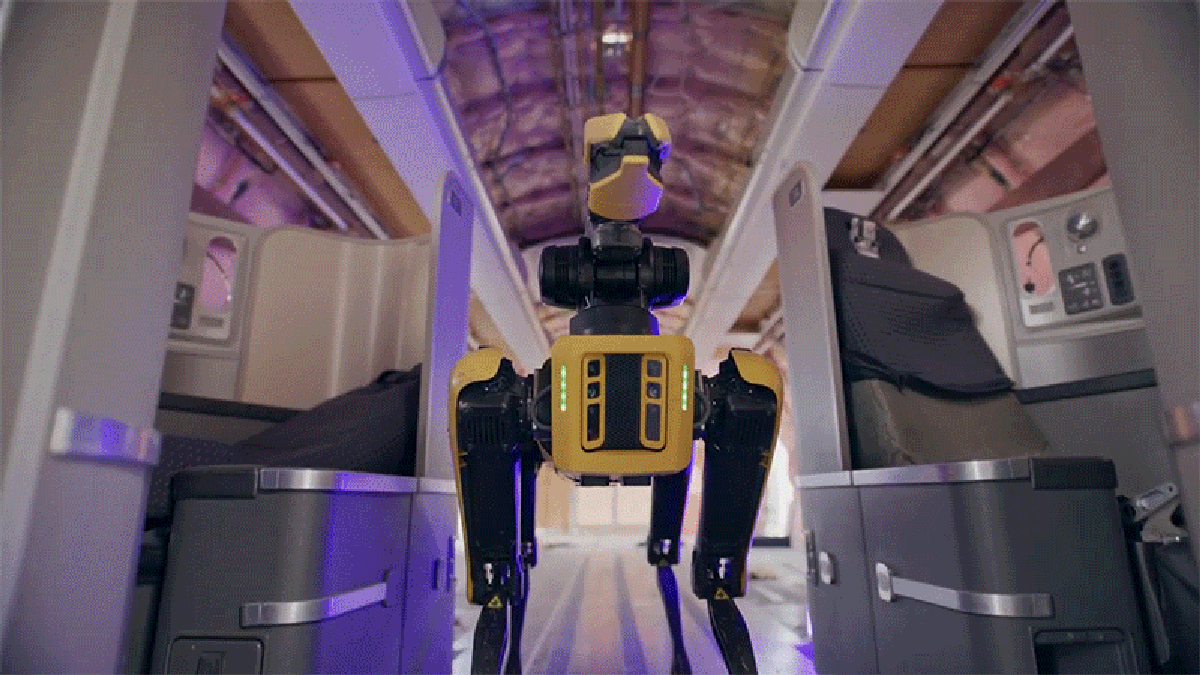
Police applications aside, what makes Spot particularly useful for industrial and scientific applications is its design, which can accommodate custom payloads on its back that include everything from collections of advanced sensors to upgraded cameras to laser scanners that create detailed maps of everywhere it roams.
These payloads can be custom designed and developed by the customers themselves, but Boston Dynamics is also introducing two new payload options today. Spot CORE I/O improves the robot’s ability to “process data in the field for tasks including computer vision-based site inspections,” thanks to an Nvidia Jetson Xavier NX module powered by a six-core ARM processor and a dedicated GPU. The I/O payload also finally adds 5G connectivity to Spot, improving the robot’s ability to wirelessly share the data it collects when operated somewhere with reliable access to AT&T’s 5G network.
Boston Dynamics is also introducing a new way to improve wireless communications with Spot in areas with poor connectivity due to physical obstructions or RF interference. The Rajant Kinetic Mesh Radio Kit includes a Spot-mounted radio payload that works alongside three standalone mesh radios which you can set up around a site to create a secure network for the robot to operate within as large as 200,000 square feet. Spot is designed to operate in some of the harshest and most remote locations on the planet, and with this new kit, the risk of an operator losing contact or control with the robot and having to manually retrieve or rescue it should be greatly reduced.
Advertisement
